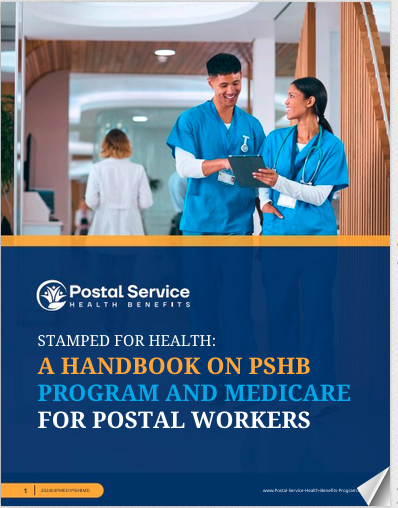Key Takeaways
- Understanding deductibles is crucial for USPS retirees to effectively manage their healthcare costs under Medicare and PSHB.
- Different parts of Medicare and PSHB have varying deductible structures, impacting how postal workers plan their healthcare expenses.
Medicare and PSHB Deductibles: Everything Postal Workers Need to Know
For USPS employees transitioning into retirement, navigating the complexities of healthcare coverage under Medicare and the Postal Service Health Benefits (PSHB) program is essential. One key aspect to understand is the concept of deductibles—how they work, how much they cost, and how they impact overall healthcare expenses. This guide provides an in-depth look at deductibles within both Medicare and PSHB, offering everything postal workers need to know to make informed decisions.
Understanding Deductibles
A deductible is the amount you must pay out-of-pocket for healthcare services before your insurance begins to cover costs. Both Medicare and PSHB have specific deductible requirements that vary depending on the type of coverage and services provided.
Medicare Deductibles
Medicare is divided into several parts, each with its own deductible structure:
Medicare Part A (Hospital Insurance)
Medicare Part A covers inpatient hospital stays, care in a skilled nursing facility, hospice care, and some home health care. The deductible for Medicare Part A is charged per benefit period, not annually.
- 2024 Part A Deductible: The deductible for each benefit period is $1,600. A benefit period begins the day you are admitted as an inpatient and ends when you haven’t received any inpatient care for 60 days in a row .
Medicare Part B (Medical Insurance)
Medicare Part B covers outpatient care, doctor visits, preventive services, and some home health services. The Part B deductible is an annual amount.
- 2024 Part B Deductible: The annual deductible is $226. Once this deductible is met, Medicare Part B typically covers 80% of the Medicare-approved amount for services, leaving you responsible for the remaining 20% .
Medicare Part C (Medicare Advantage)
Medicare Advantage Plans, also known as Part C, are offered by private insurers approved by Medicare. These plans must cover all services that Original Medicare covers, but they often include additional benefits and may have different cost structures, including deductibles.
- Part C Deductibles: Deductibles for Medicare Advantage Plans vary widely depending on the specific plan chosen. Some plans may have a combined deductible for medical and prescription drug coverage, while others may have separate deductibles for different services .
Medicare Part D (Prescription Drug Coverage)
Medicare Part D provides coverage for prescription medications. Part D plans are also offered by private insurers, and deductibles can vary.
- 2024 Part D Deductible: The maximum deductible allowed for Medicare Part D plans in 2024 is $545, though many plans have lower deductibles or none at all for certain medications .
PSHB Deductibles
The Postal Service Health Benefits (PSHB) program is set to replace the Federal Employees Health Benefits (FEHB) program for USPS employees. Understanding the deductible structures within PSHB is crucial for effective financial planning.
PSHB Plan Options
PSHB plans are similar to FEHB plans, with a variety of options available to meet different healthcare needs. Each plan has its own deductible structure, which can include:
- Individual Deductibles: The amount an individual must pay out-of-pocket before the plan begins to cover costs.
- Family Deductibles: The total amount a family must pay out-of-pocket before the plan starts to cover healthcare expenses for all family members.
Comparing PSHB to FEHB Deductibles
While specific PSHB plan details are still being finalized, it’s expected that they will closely resemble existing FEHB plan structures. In general, PSHB plans will offer a range of deductible options similar to FEHB, including:
- High-Deductible Health Plans (HDHPs): These plans typically have higher deductibles but lower premiums and are compatible with Health Savings Accounts (HSAs).
- Standard and Basic Options: Plans with lower deductibles but higher premiums compared to HDHPs.
Strategies for Managing Deductibles
To effectively manage healthcare costs, USPS retirees should consider the following strategies:
1. Budget for Deductibles
Understanding and budgeting for deductibles is crucial. USPS retirees should estimate their annual healthcare needs and set aside funds to cover these out-of-pocket expenses. Using a Health Savings Account (HSA) if enrolled in a high-deductible plan can provide tax advantages and help cover deductible costs.
2. Choose the Right Plan
Selecting the right Medicare and PSHB plans involves considering deductible amounts, coverage needs, and financial situations. Retirees should compare the total costs, including premiums, deductibles, and out-of-pocket maximums, to choose the plan that offers the best value.
3. Utilize Preventive Services
Both Medicare and PSHB offer preventive services at no cost to the beneficiary. Taking advantage of these services can help detect health issues early and potentially avoid more expensive treatments that might contribute to meeting deductibles.
4. Stay In-Network
Choosing healthcare providers within your plan’s network can significantly reduce out-of-pocket costs. Medicare Advantage and PSHB plans often have networks of preferred providers, and staying within these networks can help manage expenses more effectively.
5. Monitor Healthcare Spending
Keeping track of healthcare spending throughout the year can help retirees manage their deductibles. Regularly reviewing Medicare Summary Notices (MSNs) and Explanation of Benefits (EOBs) can ensure that services are billed correctly and that out-of-pocket expenses are accurately recorded.
Conclusion
For USPS employees and retirees, understanding the nuances of deductibles in both Medicare and PSHB is essential for managing healthcare costs effectively. By budgeting for deductibles, choosing the right plans, utilizing preventive services, staying in-network, and monitoring healthcare spending, retirees can optimize their healthcare coverage and minimize out-of-pocket expenses.
Transitioning from FEHB to PSHB while integrating Medicare benefits requires careful consideration and planning. By staying informed and proactive, USPS retirees can navigate these changes smoothly and ensure they receive the best possible healthcare coverage in retirement.
Contact Information:
Email: [email protected]
Phone: 8065556789






